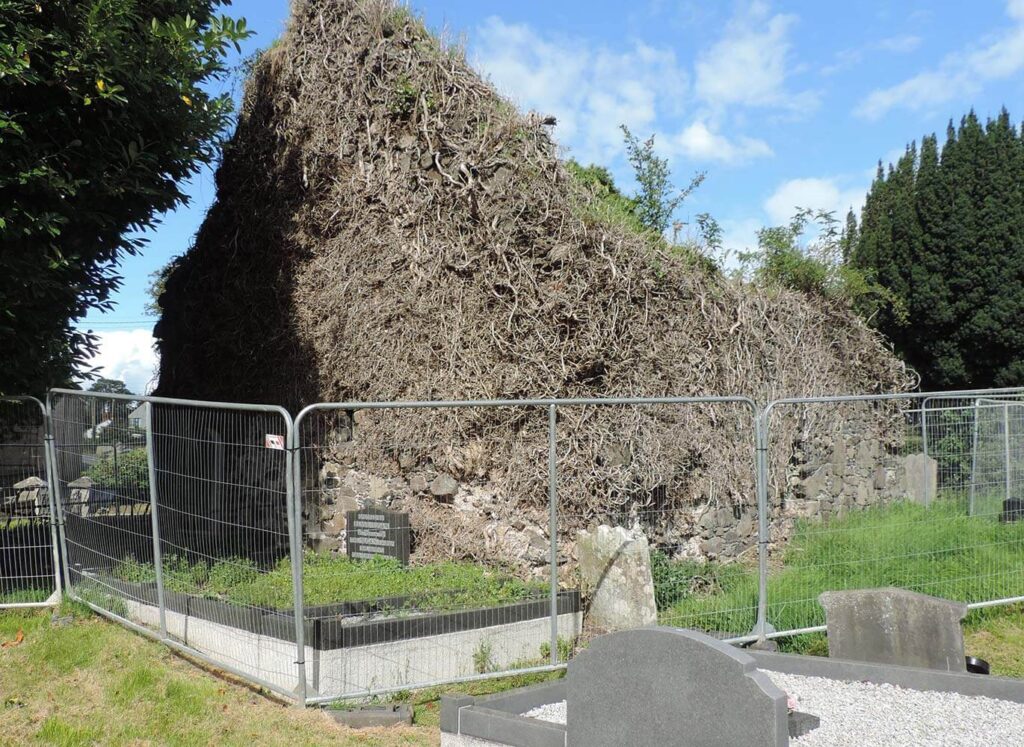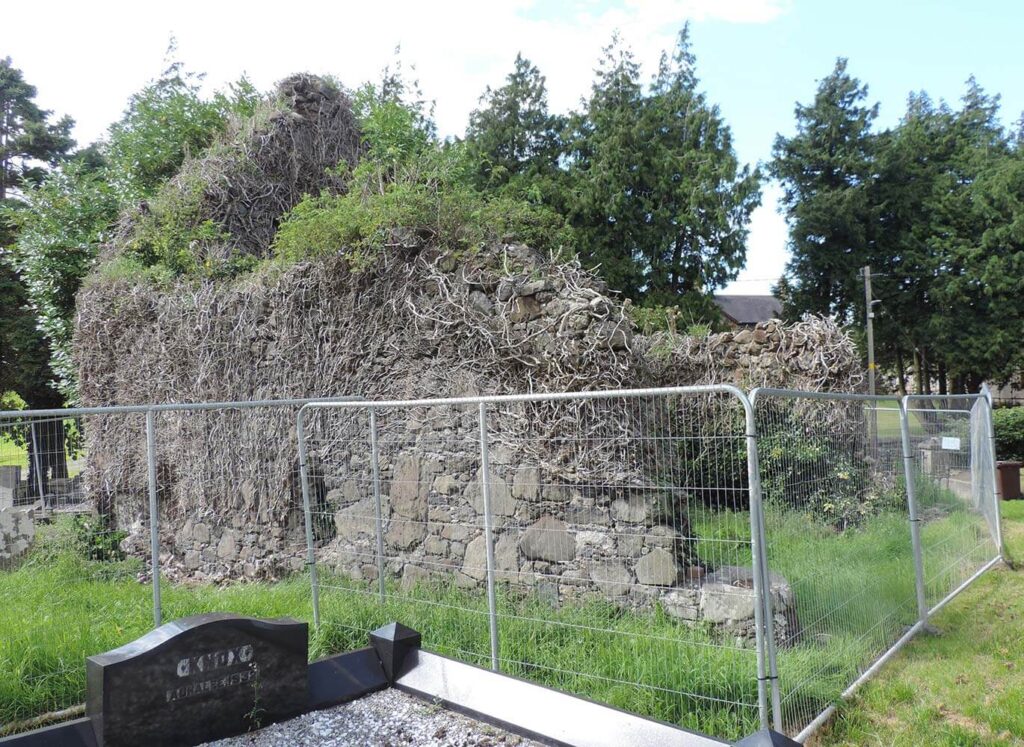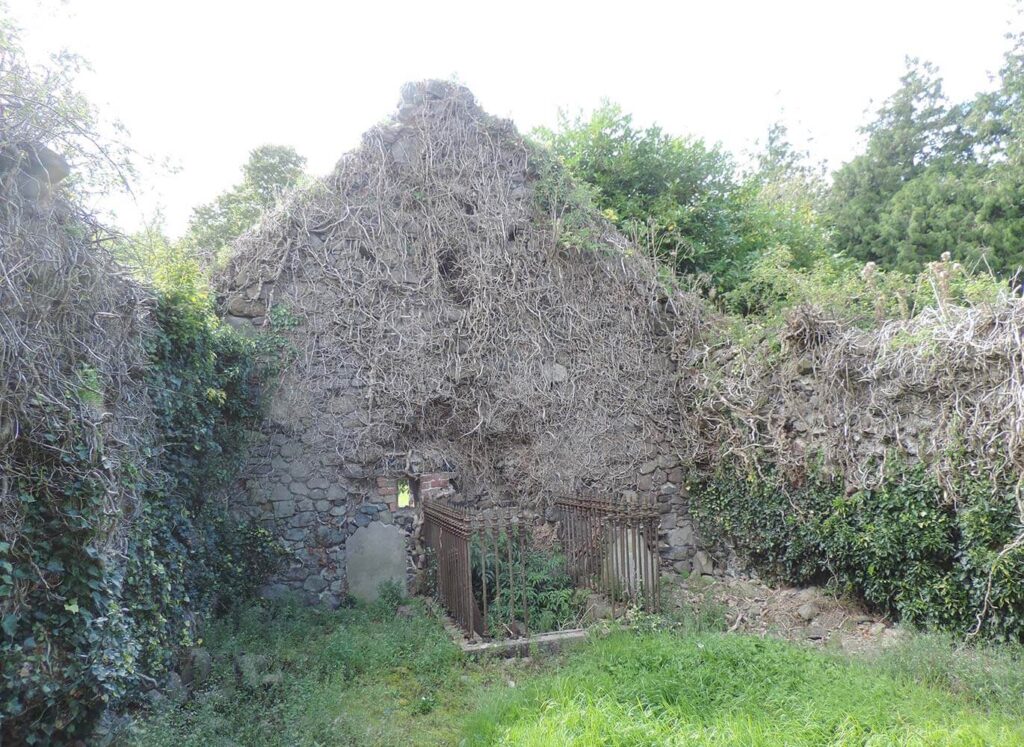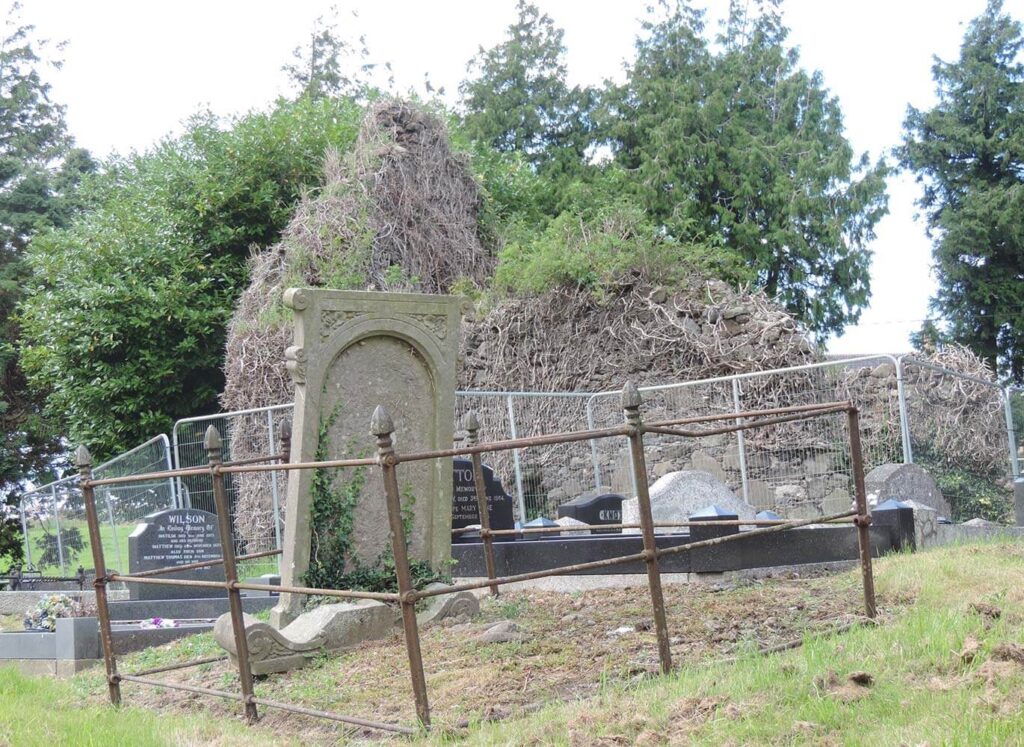(meaning ‘Field of Calves’)

The ruins of Aghalee Old Church can still be seen in the cemetery on the corner of the Ballinderry Road and Old Church Lane, just a short distance north-east of the village. Originally a hilltop ring-fort, the extent of the site has been greatly reduced by the progressive widening of both roads; the height of the retaining wall giving a good indication of how much the landscape has been altered.
A bullaun stone (Irish: bullán; cognate to ‘bowl’) is a naturally-rounded stone or boulder, with a depression which is often filled with water. A good example of a bullaun-stone can be found cemented to the south wall of the old church. OS Memoirs (1834) records that there once was an interesting stone with a double-fount, but it can no longer be seen.
Such stones were common to the neolithic period and often found at early monastic or pre-Norman Christian sites. They were often used as a font for holding ‘holy water’. Folklore would suggest that the rainwater collecting in a stone's hollow could possess healing properties. They were sometimes referred to as ‘curing stones’ … but could occasionally be used with more sinister intent as ‘cursing stones’.
Similar fount stones can be seen in many old cemeteries including Magheramesk, Laloo and Glenavy; although, the one at Aghagallon seems to have been broken in two.
While the bullaun stone remains at Old Aghalee, many of the other well-shaped stones from the church ruins have been plundered over the years, and used in the erection of houses and barns nearby.




Unlike the Holy Well at Maghernagaw, the ancient Well at Aghalee did not remain a place of devotion. With the development of the Ballinderry Road, a little stream has been piped underneath and channeled through the garden of the house opposite.
It has further been suggested that Old Aghalee may have originally had two Holy Wells; the second one being located south of the cemetery in the grounds of Aghalee House.
The OS Memoirs record evidence of a Cromlech (a megalithic tomb) having once stood near this site; evidence of the earlier inhabitants of Aghalee …
‘In Aghalee, there formerly stood an oblong enclosure formed by standing columns of stones and covered across by long flat stones by way of a canopy.’ The memoirs also record – ‘In Aghalee, there stood an ancient erection of stone pillars and pavement of stones, supposed to have been a Druid's altar.’
The O.S. memoirs also record several other interesting discoveries – ‘in demolishing a portion of the walls of Aghalee ancient church, there was a small coffer containing a quantity of ancient gold coin found, deposited in the recess made for the purpose in one of the walls. This treasure is said to have been found by some of the Usher family who were removing the stones to a house they were then building in the neighbourhood. Subsequent to the above period, it was likewise said that during further demolishing of a portion of the church there were two or more skulls found deposited in a recess made for the purpose in one of the walls.
When Holy Trinity Church was being restored as part of our Heritage Project, hopes were high of making a similar discovery. Sadly, no fortune was found!
Aghalee Old Cemetry remains in use, although it is now administered by Lisburn & Castlereagh District Council. The council are currently undertaking a project of restoring the surrounding wall and church ruins.
